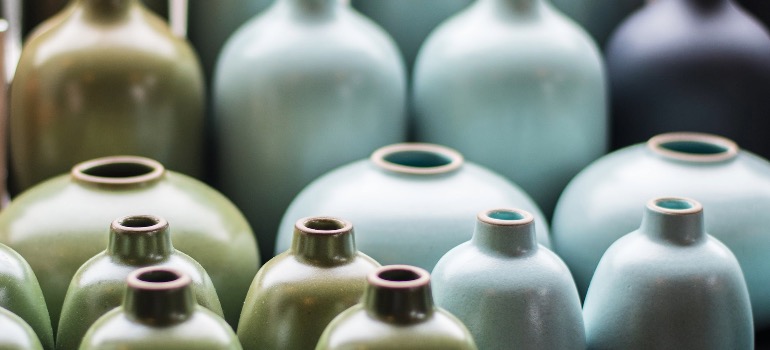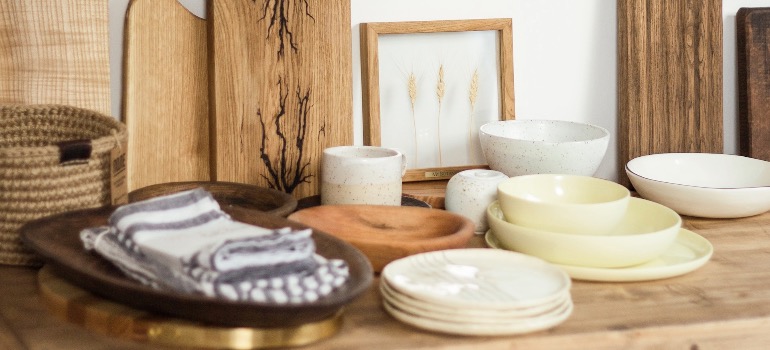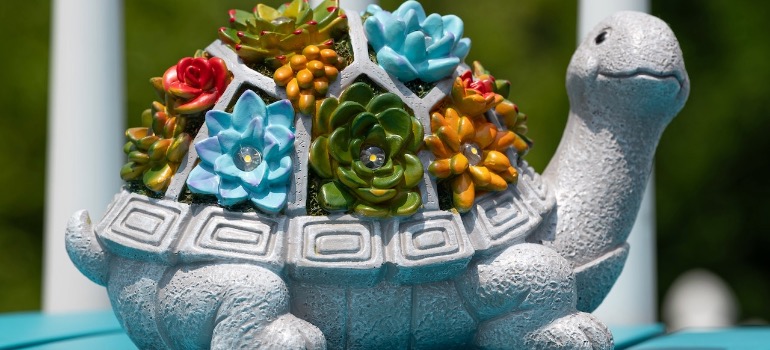Ceramics, with their varied textures and designs, are a reflection of craftsmanship and dedication. Each piece embodies hours of meticulous work, making it essential to display them prominently in any living space. However, after relocating, finding the ideal spot for these pieces can be a challenge. Showcasing your ceramics after a move requires a thoughtful approach to ensure they blend with the new environment while retaining their significance. This article aims to provide practical solutions for individuals looking to integrate their ceramic collections into new settings. By understanding various display methods and considering the specifics of the new space, one can effectively highlight the beauty and intricacy of these crafted items.
Understand Your New Space
Understanding your new space is the foundational step before deciding on the best way to showcase your ceramics. The character of each room – its size, lighting, color palette, and overall aesthetic – can influence how and where you place each piece. For instance, a room bathed in soft blues and whites might make your home feel like a coastal retreat, thereby demanding ceramics with complementary colors or themes. Additionally, consider areas of high foot traffic, potential exposure to direct sunlight, and rooms' functionalities. Is a room meant for relaxation, entertainment, or work? Each of these factors plays a pivotal role in determining the optimal placement of ceramics, ensuring they enhance the room's character while also standing out as pieces of art.
Move Your Ceramics Safely
Packing ceramics, especially delicate items like jars, vases, and intricate sculptures, demands careful attention and preparation. When preparing for a move, you have to take good care of delicate items to ensure they arrive at the new location unscathed. Start by choosing sturdy boxes that are slightly larger than the ceramic item. Place a layer of bubble wrap or crumpled packing paper at the bottom for cushioning. Wrap each ceramic piece individually in bubble wrap, securing it with packing tape to prevent unwrapping during transit. Once wrapped, place the item in the box and fill any remaining space with packing peanuts or more crumpled paper. This minimizes movement and offers added protection. Always mark the box with "Fragile" and "This Side Up" to alert movers about the contents. Investing time in proper packing techniques can safeguard your cherished ceramic possessions from potential damage during the relocation process.
Floating Shelves: A Classic Choice
Floating shelves offer a blend of elegance and functionality, making them a classic choice for showcasing your ceramics. Their minimalist design ensures that the spotlight remains on your ceramic pieces while also providing flexibility in terms of arrangement and spacing. Additionally, these shelves can be strategically positioned at eye level or higher, drawing attention to specific pieces and elevating the overall room decor. However, one crucial aspect to consider with open displays like floating shelves is dust buildup. It's important to regularly clean and maintain your pottery to help it retain its lustrous appearance and ensure longevity. With proper care and the right placement, floating shelves can beautifully enhance the prominence of your ceramics in any living space.
Using floating shelves is a classic approach to showcasing your ceramics after a move.
Room Dividers: A Modern Twist
Room dividers present an innovative solution for showcasing your ceramics after a move, especially for those wanting to seamlessly integrate their collection into larger living spaces. These dividers serve the practical purpose of segmenting a room and double as an artistic canvas for your ceramics. By affixing shelves or niches onto them, you can create dynamic displays that captivate from all angles. For individuals looking to decorate for a modern minimalist aesthetic, sleek dividers with simple lines can beautifully complement the curves and intricacies of ceramic pieces. The added advantage is the mobility of these dividers, allowing homeowners the flexibility to rearrange and refresh their displays as they expand their ceramic collection or redecorate their space.
Ceramic Garden: Blend with Nature
A ceramic garden offers a unique and enchanting way to merge the beauty of handcrafted ceramics with the serene ambiance of nature. By thoughtfully placing weather-resistant ceramic pieces amidst greenery, one can create a captivating outdoor display that evolves with the seasons. Different plants, from blooming flowers to lush ferns, can provide contrasting backdrops, making each ceramic piece pop in its own distinct way. Water features or garden paths can further enhance the display, inviting visitors to meander and admire each ceramic artwork up close. Such integration of art into nature emphasizes the pottery's organic origins and adds layers of visual and sensory interest to the garden. In this harmonious blend, ceramics become living installations, evolving and interacting with their natural surroundings in a dance of colors, shapes, and textures.
Incorporating your ceramics in your new home’s landscaping can promote a sense of serenity in your garden.
Glass Cabinets: For Delicate Pieces
Glass cabinets are an impeccable choice for those who have delicate ceramic pieces that require added protection without compromising visibility. These cabinets combine the best of both worlds, offering a safe haven for your ceramics while allowing them to be showcased beautifully. The glass ensures that every intricate detail of your pieces is visible, even from a distance. Additionally, glass cabinets can be equipped with internal lighting, casting a gentle glow on your ceramics and accentuating their features. The enclosed environment also keeps dust and pollutants at bay, preserving the pristine condition of your items.
Repurpose Furniture: An Antique Touch
Repurposing furniture is a splendid approach to showcasing your ceramics after a move, particularly for those who appreciate the charm of blending old and new. Antique furniture, with its intricate details and timeworn patina, provides a contrasting backdrop that can elevate the appearance of contemporary ceramic pieces. A vintage ladder might transform into a tiered display stand, while an old wooden table could serve as a base for a ceramic centerpiece. Drawers, cabinets, and even benches can be cleverly adapted to house and highlight your collection. By integrating ceramics into these repurposed items, you breathe new life into old furniture and create a harmonious blend of history and artistry, making each displayed piece a conversation starter in its own right.
Using an antique table or stool to display your ceramics can be a great way to introduce a rustic or delicate feel into your home’s interior.
Final Ideas
Showcasing your ceramics after a move can seem daunting, especially when trying to find the perfect blend of aesthetic appeal and protection for your prized possessions. However, as this guide illustrates, there are numerous innovative and classic methods to display your ceramics in ways that complement your new space and reflect your personal style. From utilizing the natural beauty of gardens to playing with light and shadows or repurposing antique furniture, the options are vast and versatile. As you settle into your new environment, remember that each ceramic piece carries a piece of your journey, both artistic and personal. By giving them the prominence they deserve, you not only enhance your living space but also pay tribute to the hours of craftsmanship and love embodied in each piece.
Author’s Bio
Linda Thomas is a ceramic artist with over 15 years of experience in pottery creation and a love for writing. Linda's insights are a blend of her artistic vision and practical experiences. In her free time, she also enjoys going on hikes to connect with nature and spending time with her family.




